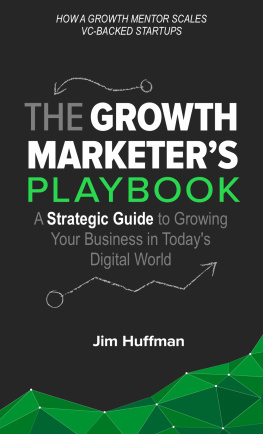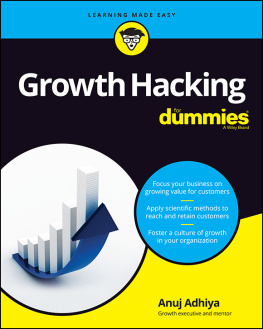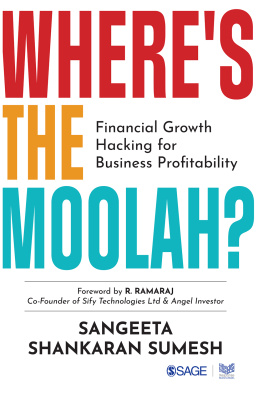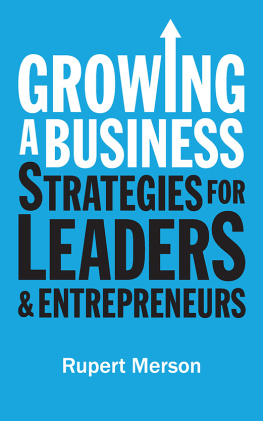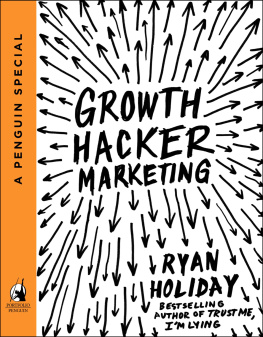Introduction
I magine growing your business without the typical growing painsno additional staff, no increased work hours, and no more headaches.
When you started out, you envisioned owning a business that spun off cash month after month without you having to work late nights and long weekends. The reality is, when you have the money, you have no time; and when you have the time, you have no money. This dollars-for-hours trade-off cycle is stuck on repeat, and you need a breakthrough in order to achieve your original vision.
Our intention is to show you how to shatter the repeat cycle by reallocating your resources, time, and money in a way that will produce a phenomenal growth result.
Intuitively, the most efficient way to produce a phenomenal result is to replicate someone phenomenal. The thing is, all of your peers are experiencing the same sales results that rise and fall with the economy. Therefore, you need to look beyond your peer group.
The fastest-growing companies in the world are technology start-ups in silicon-monikered regions such as Silicon Valley, Silicon Beach, and Silicon Alley. Youve probably heard the stories of twenty-somethings like Palmer Luckey who founded Oculus and sold the company less than two years later to Facebook for a BILLION dollars. From zero dollars to one BILLION dollars in under twenty-four months is unfathomable growth.
Raymond and Chad are growth consultants, also known as growth hackers, and have worked with some of the fastest-growing companies in the world. They have deconstructed the Silicon Valley playbook and built a framework, the Automated Sales Process (ASP), for any business to replicate and experience Silicon Valley-style growth.
What Is a Growth Hacker?
Growth Hacker (noun) /grth ha-kr/: a highly resourceful and creative marketer singularly focused on high-leverage growth.
Growth hackers thrive in resource-constrained environments where money is tight and time is of the essence. Through a mix of creativity and technology, a growth hacker is able to hack through the jungle, uncover buried resources along the way, and construct the tools needed to grow a business. A growth hacker is the figure-it-out-as-we-go adventurer of Indiana Jones mixed with the problem-solving ingenuity of MacGyver.
Chad Riddersen saw the growth-hacking phenomenon unfold firsthand as a card-carrying member of both the Silicon Valley and Silicon Beach start-up communities. As an investment banker focused on early and growth-stage technology companies, he met with hundreds of entrepreneurs looking to raise millions and sell their company for hundreds of millions. Although several of the companies he worked with were successfully acquired by companies such as Skype, TiVo, and American Express, the vast majority of companies died off or became zombies (dead, but still hobbling along).
What Chad recognized was an emerging pattern that differentiated the successful, rocket-growth companies from the crash-and-burn failures. That pattern was an emphasis on growth hacking, a term first coined by Sean Ellis in 2010 when looking for candidates to expand the marketing division he headed at the now multibillion-dollar technology company, Dropbox. Sean observed that growth hacking is not something that can be taught in a classroom, but rather its a mind-set that someone like you can adopt. Distilled down to its core, the mind-set is a singular unrelenting focus on growth.
Chad first observed the incredible power of growth hacking when helping to raise sixty-seven million dollars for LegalZoom, which, at that time, was a company worth half a billion dollars and was less than a decade old. At LegalZoom, the marketing team consisted of an eclectic mix of liberal-arts majors and computer engineers all tasked with one common goal: growth.
Captivated by the mechanics of growing a company, Chad left investment banking to work as a consultant for Dollar Shave Club, a subscription-commerce mens brand that was acquired for one billion dollars cash just four years later. When Chad started working with Dollar Shave Club, they were a couple guys in a shared office in Santa Monica with a shoestring budget going up against the multibillion dollar budgets of razor blade brands like Gillette. How was Dollar Shave Club David going to beat Goliath Gillette selling a product with zero perceivable differentiation? The answer: growth hacking.
Spending $4,500 and filming in a single day, the Dollar Shave Club team created a YouTube video that went viral, racking up over one million views in the first seventy-two hours and bringing in twelve thousand paying customers. While creating viral content is partially attributable to luck, there are certain things that the Dollar Shave Club team did to stack the cards in their favor. Not only was the video launched right before a large industry conference, but the team meticulously scripted comedy tightly woven around the core mission of the company that left viewers chuckling and eager to share with their friends. In a resource-constrained environment where companies mercilessly compete for consumer attention, growth-hacking fortunes favor the creative bold.
Chad was retained a couple weeks after the video went live to help develop the international expansion strategy. Following the completion of the Dollar Shave Club engagement, Chad met Raymond Fong, who had spent years helping small business owners grow, and they reflected, How can we deconstruct the growth-hacking phenomenon that is enabling tech start-ups to beat out multibillion dollar brands in a way that can be applied to any business?
Raymond had been working with traditional business owners since 2005 as a consultant, trainer, and mentor. He has taught tens of thousands of business owners around the world how to market their businesses online, and he hosted an annual small business conference in Las Vegas that attracted hundreds of entrepreneurs from all across America and beyond. Raymond was no stranger to clever and resourceful online-marketing tactics and had been growth hacking several years before it became a catchy buzzword.
Raymond intimately understood the challenges and tribulations business owners faced when trying to grow their business. Most owners didnt have the working capital to justify traditional marketing efforts where advertising costs were prohibitively high and results were exceedingly slow to bear fruit. By necessity, Raymond had to be creative in his coaching and engineered new ways of achieving the same results as traditional marketing channels without the high expense and slow timelines. When Raymond was able to achieve better results than the traditional methods, he knew he had engineered something special. After Raymond met Chad, he realized the something special he had engineered was what Silicon Valley start-ups were calling growth hacking.
.

